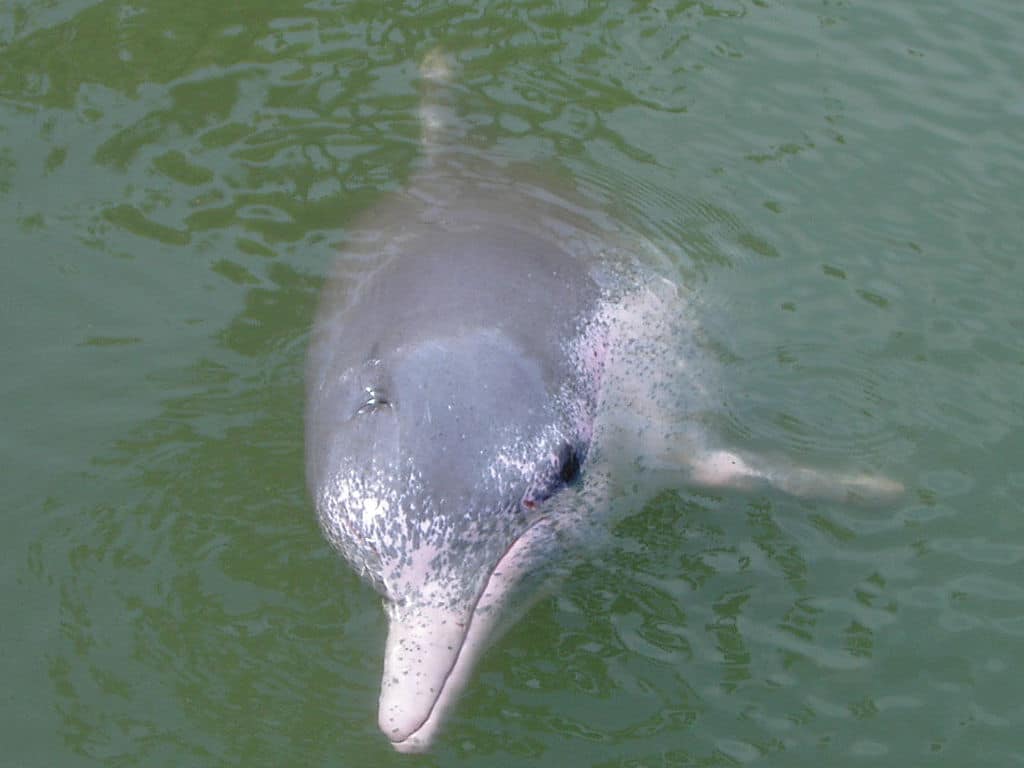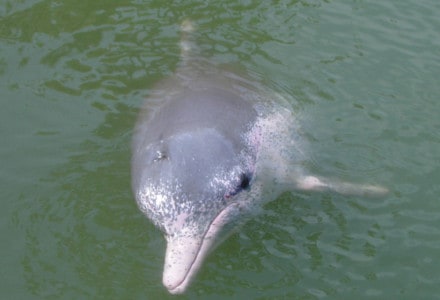
Indo-Pacific humpback dolphin Facts
- This magnificent denizen of the oceans of the world most frequently goes by the informative common name of the Indo-Pacific humpback dolphin. It also has another, less often used general name, however. That’s the name of the Chinese white dolphin.
- Professionals, though, such as researchers, generally refer to this masterpiece of Nature by its scientific name. That term, though, is the less than easy to pronounce name of the Sousa chinensis. Regardless of the term applied, however, it’s a remarkable creature.
- It further received that name due to the work of the respected naturalist, Pehr Osbeck. The explorer, an apostle of the legendary Carl Linnaeus himself, made the first official acknowledegement of the animal as a separate and distinct species, in the year 1765.
- Previously, researchers considered it to be a subspecies of the Indian Ocean humpback dolphin. Subsequent DNA analysis, however, disproved that belief. Yet another related but separate species has now been identified, the Australian humpback dolphin.
- Regrettably, for several reasons, the amazing Indo-Pacific humpback dolphin now finds itself facing several threats to its continued existence. The IUCN, therefore, currently lists it as Vulnerable on the organizations’ published Red List of Threatened Species.
- Habitat loss forms a real concern for this impressive animal, largely due to coastal development. Overfishing and increased marine traffic throughout its range also pose a danger to it. Its greatest threat, however, most likely consists of ongoing climate change.
Related Articles
Indo-Pacific humpback dolphin Physical Description
The dazzling Indo-Pacific humpback dolphin fully merits appreciation for several factors. Being a roughly average-sized member of its Family, however, sheer size isn’t among them. The remarkable creature nevertheless does deserve respect, as most of its relatives.
Also following the pattern of most of its kind where physical size is concerned, it displays a moderate degree of the physiological trait of sexual dimorphism. In its case, this characteristic manifests itself with the males attaining a slightly greater size than females.
Individually, though, this measurement varies quite significantly. That’s because mature adults range in total length from 5.9 – 9.8 ft (1.8 – 3 m). Adult weights, however, vary somewhat less. Such individuals typically range from 551 – 628 lb (250 – 285 kg).
This smaller weight-to-length ratio often results in some specimens having a more rounded form than others. Otherwise, though, the two genders appear virtually identical. The prominent hump for which it’s known, however, varies in size from region to region.
It’s the color patterns of the Indo-Pacific humpback dolphin, though, that garners the most attention. That’s due to the fact that this varies significantly between adults. These range from a dark grey to whitish or even pinkish! Many also display small dark flecks.
- Kingdom: Animalia
- Phylum: Chordata
- Class: Mammalia
- Order: Artiodactyla
- Family: Delphinidae
- Genus: Sousa
- Species: S. chinensis
Indo-Pacific humpback dolphin Distribution, Habitat, and Ecology
Intriguingly, the marvelous work of evolution known as the Indo-Pacific humpback dolphin inhabits a territorial range that’s both expansive and restrictive. It’s very name provides a clue to that zone. More precisely, overall, it lives in both the Indian and Pacific Oceans.
In the Indian Ocean, that range remains more general, with the animal living along virtually all coastlines. In its Pacific Range, though, it remains slightly more specific. There, it mainly appears along the coasts of New Guinea, continental Australia, and Southeast Asia.
Within that zone of habitation, though, it typically restricts itself to very specific areas. These consist of the relatively shallow regions. This usually consists of sections along the coasts. There, however, it often frequents bays, estuaries, coral reefs, and even river mouths.
Given its geographical range, the creature clearly prefers tropical to subtropical climates. As a general principle, the marine mammal makes its home in waters warmer than 59F (15C). The beautiful species also rarely ventures to depths greater than 82 ft (25 m).
Just as its many relatives, the Indo-Pacific humpback dolphin feeds carnivorously. It principally feds on large quantities of fish species associated with either reef or estuaries. It most commonly feeds in close proximity to the floor of the ocean, sometimes in groups.
Meanwhile, its only confirmed predators consist of various types of sharks. Given its habitat range, however, Orcas likely also prey on the amazing animal. Some individuals live a solitary life, while others live in small groups. These typically range from 10-25 in number.
Species Sharing Its Range
Check out our other articles on 3 Stunning Sea Lions, Guinan cock-of-the-rock, Farallon Islands, Hemlock Looper, California red-sided garter snake, Tree Heather

